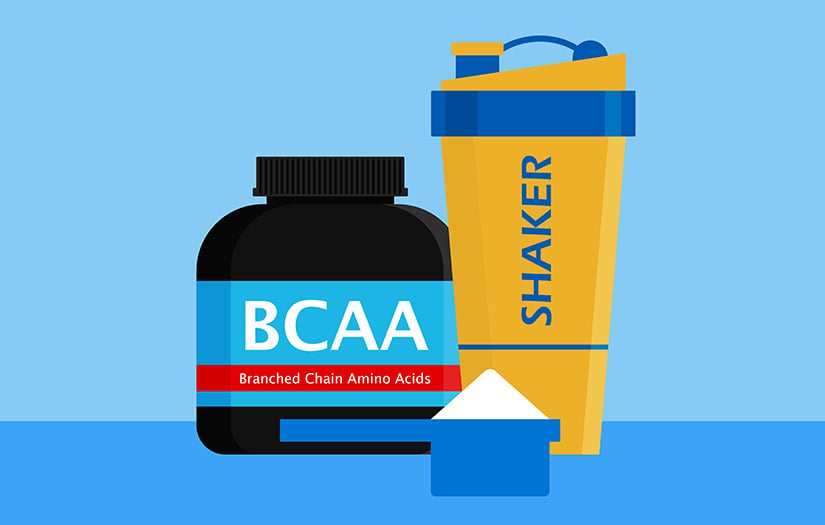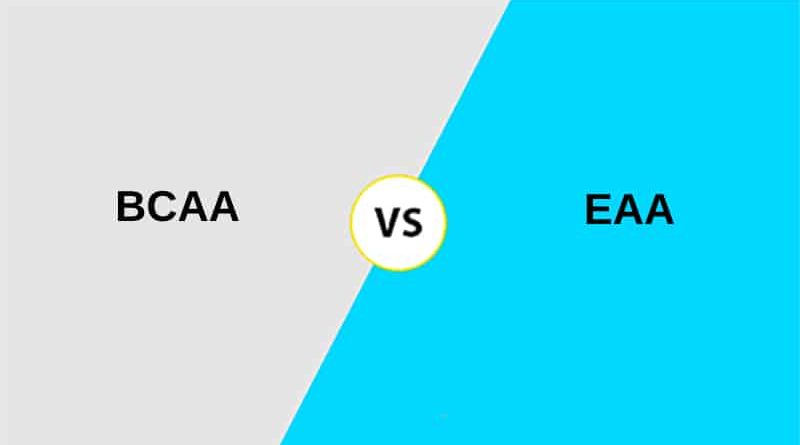The Difference Between BCAA and EAA Supplements
Branched-chain amino acids (BCAAs) are three essential amino acids – leucine, isoleucine and valine – that the body doesn’t synthesize on its own but needs to obtain from the diet. Branched-chain amino acids belong to the group of nine essential amino acids and are thus classified as conditionally essential amino acids. The other six essential amino acids are histidine, lysine, phenylalanine, threonine, tryptophan and methionine.
What are branched-chain amino acids?

BCAA contain three essential amino acids: leucine, isoleucine, and valine. They are called branched-chain because of their structure. BCAA supplements are popular among athletes and bodybuilders because they can help increase muscle growth and reduce fatigue. The body breaks down these proteins for energy so it’s important to take them before or after exercise. But, what about the difference between BCAA and EAA? First, let’s start with what each one does. EAA stands for Essential Amino Acids and includes the following nine proteinogenic amino acids: phenylalanine, tyrosine, tryptophan, methionine, histidine, arginine, cysteine, glutamine and glycine. BCAA stands for Branched Chain Amino Acids which consists of three essential amino acids: leucinie isoleucinie valiniie. They are called branched-chain because of their structure. BCAA supplements are popular among athletes and bodybuilders because they can help increase muscle growth and reduce fatigue. The body breaks down these proteins for energy so it’s important to take them before or after exercise. But, what about the difference between BCAA and EAA? First, let’s start with what each one does. EAA stands for Essential Amino Acids and includes the following nine proteinogenic amino acids: phenylalanine, tyrosine, tryptophan, methionine, histidine, arginine, cysteine, glutamine and glycine. BCAA stands for Branched Chain Amino Acids which consists of three essential amino acids: leucinie isoleucinie valiniie. They are called branched-chain because of their structure.
What are essential amino acids?

BCAA supplements are becoming increasingly popular with athletes and fitness enthusiasts. But what are they? And do you need them? Let’s take a closer look at BCAA and EAA supplements to find out. What is an essential amino acid? The body cannot synthesize an essential amino acid, so it must be consumed through the diet. Among them are leucine, isoleucine, valine, lysine, threonine, tryptophan, methionine, and phenylalanine. If you don’t consume enough protein in your diet (or supplement it), your body will begin to break down muscle to meet its protein needs. A low-protein diet can lead to muscle loss or atrophy, weakness, weight loss or failure to maintain weight, bone density reduction and osteoporosis – all from not eating enough protein! Essential amino acids: Our bodies cannot produce these nine types of amino acids on their own. Non-essential: The term non-essential refers to those eight types of amino acids which can be produced by our bodies with adequate dietary intake.
Do you need both supplements?
While both supplements can be beneficial to your workout routine, you may not need both. It all depends on your fitness goals. If you’re looking to build muscle, then BCAA is the way to go. But if you’re wanting to improve your endurance, then EAA is the better supplement for you. Here’s a breakdown of the differences between the two BCAAs are comprised of leucine, isoleucine, and valine while EAAs contain essential amino acids such as phenylalanine, tyrosine, lysine and tryptophan. BCAAs are often taken before or during workouts to prevent muscle protein breakdown. EAAs are more commonly taken post-workout when soreness has set in or after intense physical activity to aid in recovery and repairing tissue damage caused by the intense activity. Both supplements should be taken on an empty stomach with 8 ounces of water 20 minutes before exercise or 30 minutes after exercise. For best results, take BCAA at least three times per day (30 minutes prior to working out) and EAA about five times per day (every 3 hours).
How much do you need?

The recommended dosage for BCAA is 5-10 grams per day, while the recommended dosage for EAA is 10-20 grams per day. The difference in dosage is due to the different ratios of amino acids in each supplement. For example, BCAA has a 2:1:1 ratio of leucine to isoleucine to valine, while EAA has a 6:1:1 ratio of leucine to isoleucine to valine. This means that BCAA contains more leucine than EAA, which is why it’s recommended that you take less BCAA than EAA. What does this mean?: The higher amount of leucine contained in BCAA can help stimulate muscle protein synthesis (MPS) because leucine stimulates MPS through activation of mTOR signaling pathway, increasing intracellular protein concentrations. However, there are other factors that affect muscle growth aside from leucine intake; therefore, taking too much BCAA might not be as beneficial as taking enough EAA.
Taking branched chain amino acids with exercise

Branched chain amino acids are a type of amino acid supplement that can be taken with or without exercise. They’re often taken to improve athletic performance or increase muscle mass. Some research suggests that they may also help reduce fatigue after exercise. However, there’s no evidence that they’re more effective than other amino acids when it comes to these benefits. And some studies suggest that the amount of branched chain amino acids you need for these effects is too high for them to have any beneficial effect at all. So if you’re considering taking branched chain amino acids, make sure you discuss this decision with your doctor first. There’s still much we don’t know about how much we should take and whether or not this could cause harm over time.
Are they safe?

BCAAs are three amino acids: leucine, isoleucine, and valine. BCAAs are found in protein-rich foods such as meat, poultry, fish, and eggs. These amino acids cannot be produced by the body and must be obtained through diet or supplementation. Branched-chain amino acid supplements usually come in powder form and may be consumed with food or beverages. Children under 12 may not be able to consume them. For products containing more than 100 mg per day, the FDA requires a warning label warning that excessive quantities of these substances can produce laxative effects. However, at doses up to 3 grams per day, there is no evidence that it is true. If the supplement does not contain any ingredients other than branched-chain amino acids, it should be considered safe.




